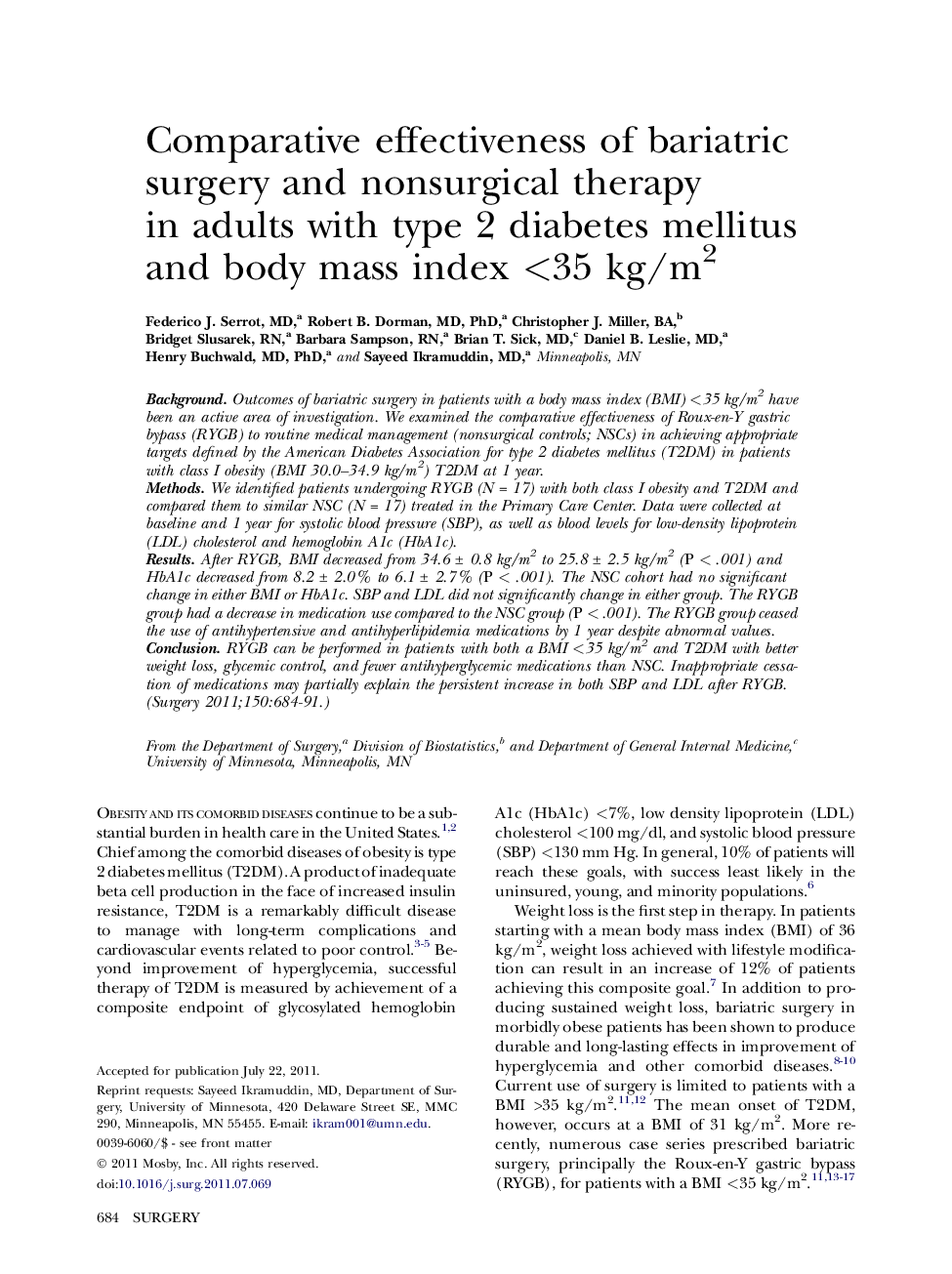| Article ID | Journal | Published Year | Pages | File Type |
|---|---|---|---|---|
| 4308570 | Surgery | 2011 | 8 Pages |
BackgroundOutcomes of bariatric surgery in patients with a body mass index (BMI) <35 kg/m2 have been an active area of investigation. We examined the comparative effectiveness of Roux-en-Y gastric bypass (RYGB) to routine medical management (nonsurgical controls; NSCs) in achieving appropriate targets defined by the American Diabetes Association for type 2 diabetes mellitus (T2DM) in patients with class I obesity (BMI 30.0–34.9 kg/m2) T2DM at 1 year.MethodsWe identified patients undergoing RYGB (N = 17) with both class I obesity and T2DM and compared them to similar NSC (N = 17) treated in the Primary Care Center. Data were collected at baseline and 1 year for systolic blood pressure (SBP), as well as blood levels for low-density lipoprotein (LDL) cholesterol and hemoglobin A1c (HbA1c).ResultsAfter RYGB, BMI decreased from 34.6 ± 0.8 kg/m2 to 25.8 ± 2.5 kg/m2 (P < .001) and HbA1c decreased from 8.2 ± 2.0% to 6.1 ± 2.7% (P < .001). The NSC cohort had no significant change in either BMI or HbA1c. SBP and LDL did not significantly change in either group. The RYGB group had a decrease in medication use compared to the NSC group (P < .001). The RYGB group ceased the use of antihypertensive and antihyperlipidemia medications by 1 year despite abnormal values.ConclusionRYGB can be performed in patients with both a BMI <35 kg/m2 and T2DM with better weight loss, glycemic control, and fewer antihyperglycemic medications than NSC. Inappropriate cessation of medications may partially explain the persistent increase in both SBP and LDL after RYGB.
